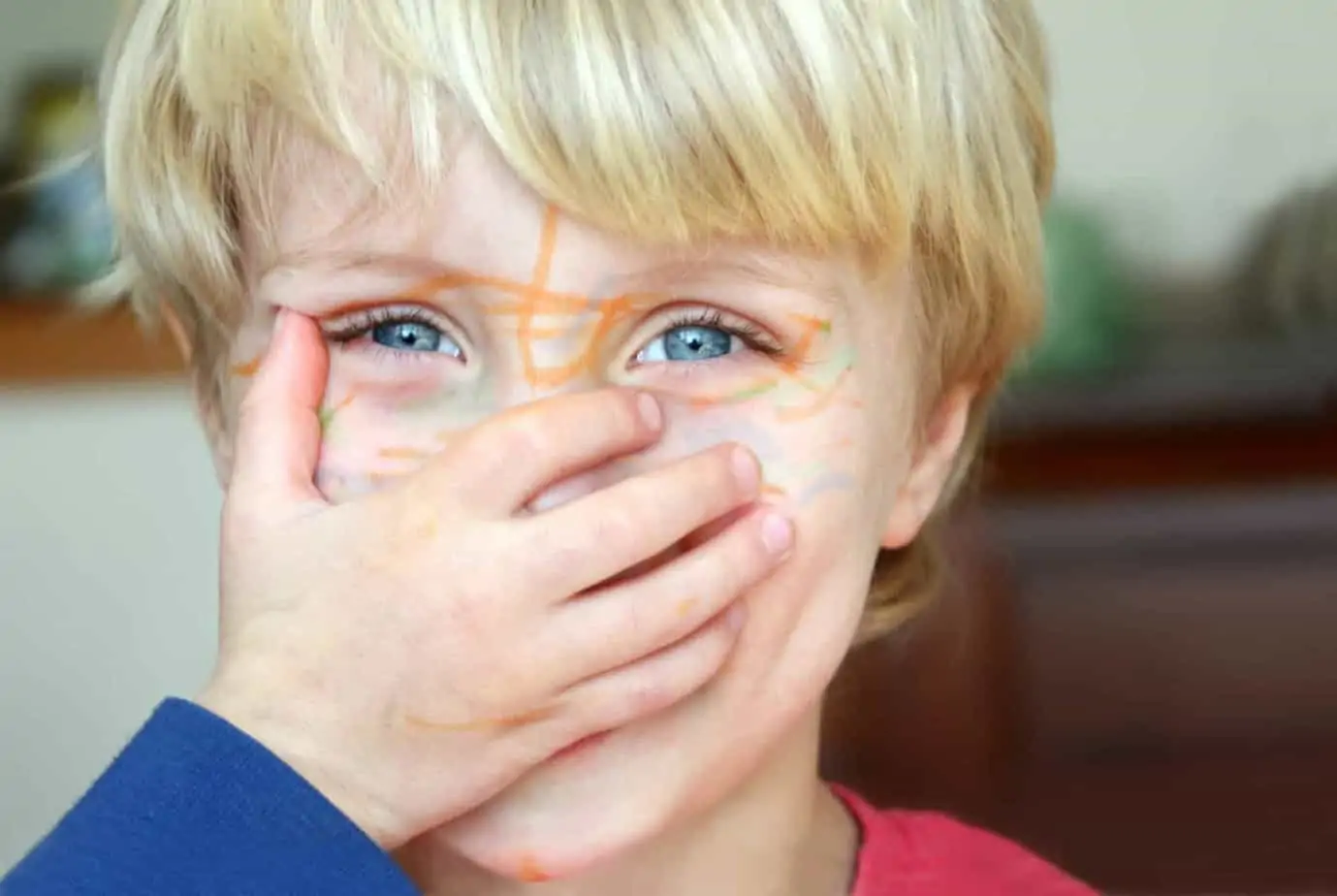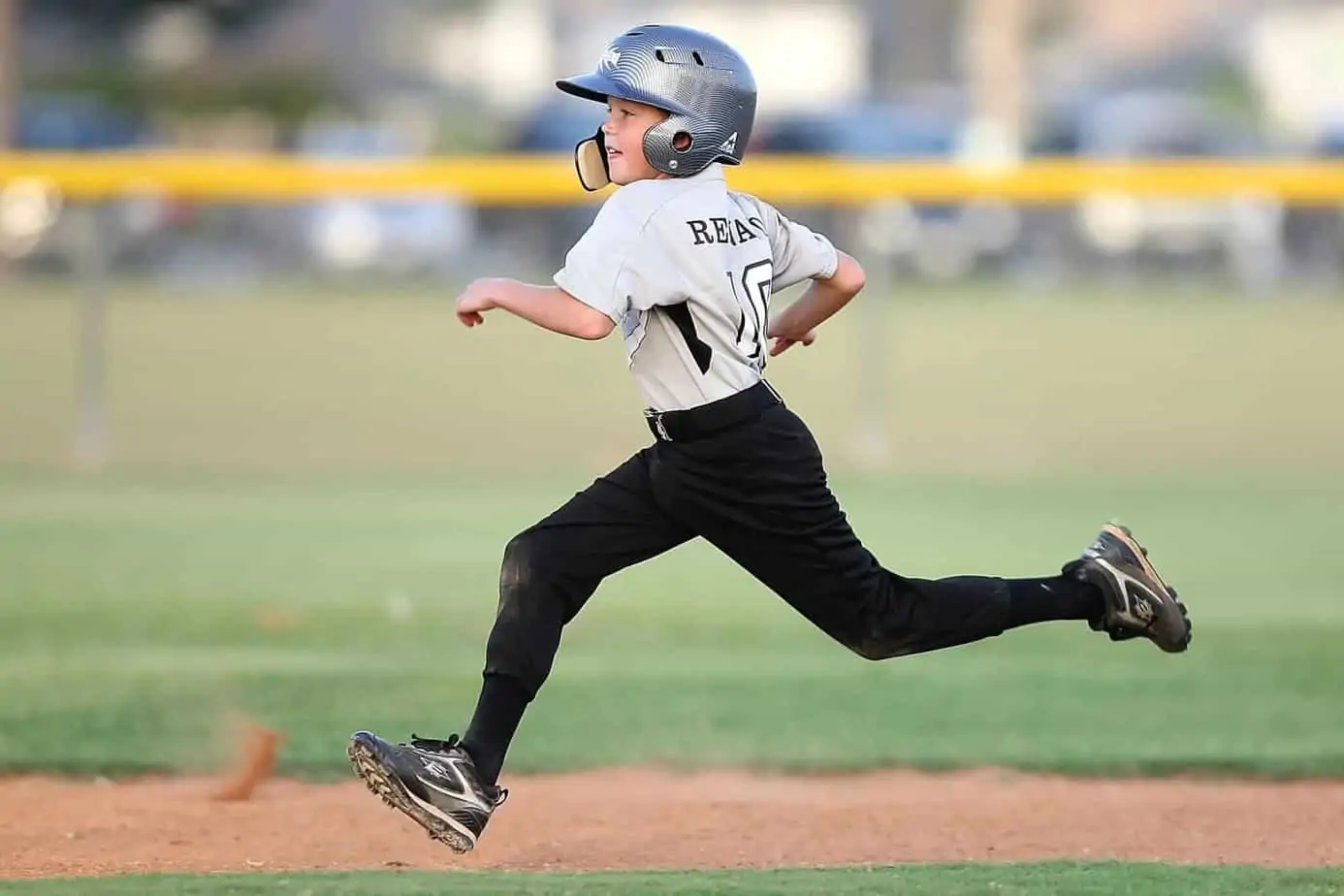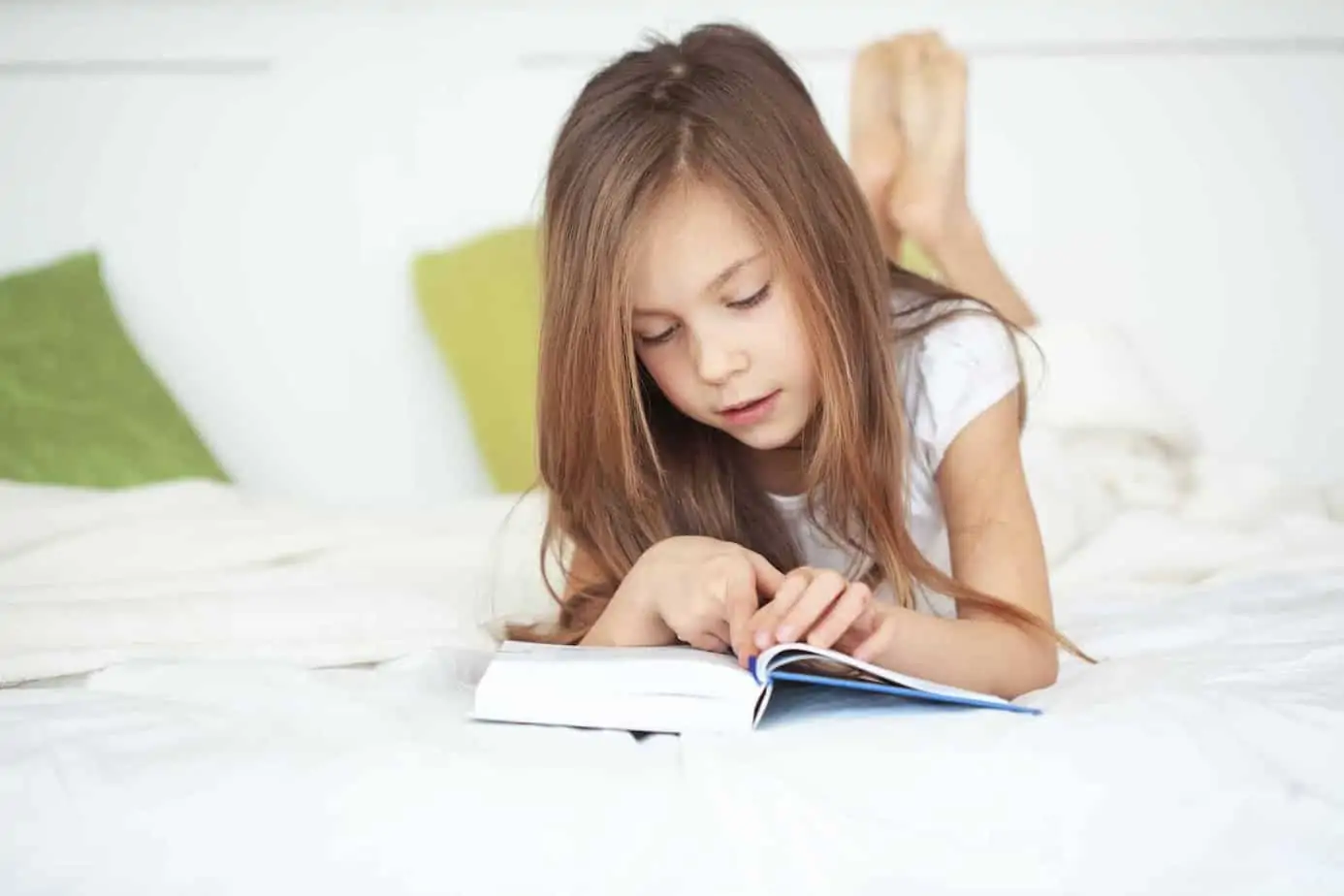As parents, it’s incredibly tough to watch our children struggle with anxiety.
From my own experience of tackling anxiety, I know how debilitating it can feel to have racing thoughts, a pile of worries, and the physical symptoms such as a racing heart, intense fear and worries causing insomnia and fatigue.
In the past two years, I’ve seen my teenager’s anxiety peek it’s little head out. Over this time, I’ve worked hard to share tools with them that empower them to calm their bodies down on the spot, stop the monkey mind and steps to work backwards and figure out the root of the anxiety, so it can be healed at the source.
The truth is anxiety isn’t fun, nor is it easy to feel your way through it.
It’s not fun to feel anxious or see someone you love struggle with anxiety. Especially kids who this feels strange and concerning.
Whether it’s the start of a new school year, ongoing school pressures, or performance anxiety, these feelings can be overwhelming for kids.
Take a deep breath.
The good news is that with the right tools and support, we can help our children navigate these challenges and build resilience.
This article offers practical advice, routines, and 8 real-life tools (that immediately work!) your child can use to manage their anxiety. We’ll also explore effective ways to talk to your child about their worries and provide insights from experts like Dr. Eli Lebowitz and Regine Galanti, who have dedicated their work to helping parents support their anxious kids.
By integrating these strategies into your daily routine, you can empower your child to take control of their anxiety and thrive.
Understanding Childhood Anxiety
Before diving into the tools and techniques, it’s important to understand what childhood anxiety looks like.
With my daughter, her tell-tale sign that something is bothering is, is that she’ll linger at bedtime and wants to talk more. She craves more 1:1 time and doesn’t want to be alone with her thoughts and worries. She might also want to sleep in our room or ask her sister to sleep with her for comfort.
Anxiety can manifest in various ways, such as physical symptoms like stomachaches or headaches, behavioral changes like irritability or withdrawal, and emotional symptoms like excessive worry or fear.
School-related anxiety might show up as reluctance to go to school, difficulty concentrating, or fear of tests and social situations.
Understanding these signs is the first step in helping your child manage their anxiety. You can start to recognize patterns in behavior, so you’re alerted to their worries or anxiety coming through in a physical way. When you recognize these symptoms, you can provide the appropriate support.
Then, use one or all of the 8 tools to stop anxiety in it’s tracks found below. See what resonates with you the most and feels the best.
Building a Routine to Manage Anxiety at Home
A stable and predictable routine can provide a sense of security and reduce anxiety for children. Here’s how you can structure your day to help your child manage their anxiety:
- Morning Routine – Start the day with a consistent morning routine. Encourage your child to wake up at the same time each day, have a healthy breakfast, and engage in a calming activity like stretching or listening to soft music. A peaceful morning routine sets a positive tone for the day.
- Homework and Study Time – Establish a specific time and quiet space for homework and study. Ensure this environment is free of distractions and has everything your child needs. Break tasks into smaller, manageable chunks, and take regular breaks to prevent overwhelm. Create a practical and stress-free homework routine.
- Evening Wind-Down – Create a relaxing evening routine that includes time to wind down before bed. Activities like reading, taking a warm bath, or practicing deep breathing can help your child relax and prepare for sleep. Nighttime routine for calm and peaceful sleep and end to the day.
- Consistent Bedtime – Ensure your child gets enough sleep by sticking to a regular bedtime. Lack of sleep can exacerbate anxiety, so prioritize a sleep schedule that allows for adequate rest.
8 Practical Tools for Managing Anxiety
As a holistic health practitioner, I see a lot of parents and children who experience anxiety. These are the same tools I share in practice to give them practical and quick-fix tools to help on the spot whether they’re in school, at home or in the car.
Here are some tools your child (and you) can use independently when they start to feel anxious:
- Deep Belly Breaths – Teach your child to take deep, slow breaths, filling their belly with air and then exhaling slowly. Exhaling longer than the time it takes to inhale is the key to peace and calm! For example, breathe in for 5 seconds, hold for 5 seconds and let the air out for 6-8 seconds. This simple technique helps calm the nervous system and reduces anxiety in the moment. Note: the Calm Down Toolkit has several printable breathing technique posters for kids that can help them self-regulate.
- Cold Water Therapy – Running their hands under cold water can help your child shift their focus away from their worries and provides a sensory distraction that can reduce anxiety. It stops the thinking mind from conjuring more worries and uses the senses to shift out of this mindset.
- Grounding Techniques – Encourage your child to engage their five senses to bring themselves back to the present moment. They can try to identify five things they can see, four things they can touch, three things they can hear, two things they can smell, and one thing they can taste. Note: print this grounding printable sheet to have in your child’s binder, desk, on the fridge or put in a place that’s easy to see.
- Legs up on the Wall – Getting on the floor, scoot until your bottom is close to the wall and put your legs up on the wall overhead. This instantly drops high cortisol levels and gets you out of fight or flight mode and into a calmer state of being.
- Positive Affirmations – Help your child develop a list of positive affirmations they can say to themselves when they feel anxious. Statements like “I am in control of my emotions” or “I can handle this” or “I am safe” can build confidence and reduce anxiety.
- Progressive Muscle Relaxation – Guide your child through tensing and then relaxing different muscle groups in their body, starting from their toes and working up to their head. This exercise helps release physical tension associated with anxiety.
- Using Bach Flower Stress Relief Rescue Remedy in tincture or little rescue remedy pastilles are great to help calm the body down.
- Use visualization Tools and think about a time when you felt loved and joyful. When you picture this event, you’re not using your “thinking” mind which is what creates the feelings of worry and fear. Being in a place or memory of joy or love, elicits the feelings of peace and calm. You can then take the perspective that the thinking mind is what is causing the money thoughts and stirring up the dreadful feelings. Picture yourself putting up a wall between the feelings of love, joy, peace and calm to the thinking mind.
How to Talk to Your Child About Their Anxiety
Having open and supportive conversations about anxiety is crucial. Here’s how you can approach these discussions:
- Start with Empathy – Begin by acknowledging your child’s feelings without judgment. You might say, “I can see that you’re feeling worried about school. That’s okay, and I’m here to help you.”
- Ask Open-Ended Questions – Encourage your child to express their feelings by asking open-ended questions. Instead of asking, “Are you anxious?” try asking, “What’s on your mind right now?” or “How does that make you feel?”
- Validate Their Emotions – Let your child know that it’s okay to feel anxious and that their feelings are valid. Say things like, “It’s normal to feel nervous before a big test” or “It’s okay to feel worried about making new friends.”
- Offer Reassurance – Remind your child that anxiety is a normal part of life and that everyone feels anxious sometimes. Assure them that they have the tools to manage these feelings and that you’re there to support them.
- Focus on Solutions – Work with your child to identify strategies they can use to cope with their anxiety. Encourage them to think about what helps them feel better and practice those techniques together.
Additional Effective Tools and Resources
In addition to the techniques discussed above, there are several resources that can help both you and your child understand and manage anxiety:
Books
– “Breaking Free from Childhood Anxiety and OCD” by Dr. Eli Lebowitz – This book provides parents with a practical approach to helping children overcome anxiety and OCD. It offers strategies that can be easily implemented at home and in daily life.
– “Parenting Anxious Kids” by Regine Galanti – This book is a guide for parents on how to help their children manage anxiety. It includes tips on identifying anxiety triggers, building coping strategies, and fostering resilience in anxious kids.
Mindfulness Apps
There are several apps designed for children that can help them practice mindfulness and relaxation techniques. Apps like “Headspace for Kids” or “Smiling Mind” offer guided meditations and exercises tailored to children’s needs.
Homeopathy
Consider reaching out to work with a homeopath who can give you a specific remedy unique to the person, to help resolve anxiety at the root cause of it so it doesn’t keep reappearing. This will be a remedy that’s individual and unique to each person and based on their life experiences, behaviors, symptoms, and personal descriptors.
We have homeopathy in our house and it’s been life changing for acute symptoms and also deeper-rooted behaviors such as anxiety.
Therapy and Counseling
If your child’s anxiety is particularly severe or persistent, consider seeking professional help. A therapist who specializes in childhood anxiety can work with your child to develop effective coping strategies and provide support.
Creating a Supportive Environment
Finally, it’s important to create an environment at home that supports your child’s emotional well-being:
- Open Communication
Foster an environment where your child feels safe to express their emotions. Let them know they can come to you with any worries or fears without fear of judgment. - Model Healthy Coping
Children learn by example, so demonstrate healthy ways to manage stress and anxiety in your own life. Practice deep breathing, talk about your feelings, and show your child how to cope with challenges in a calm and positive way. - Encourage Healthy Habits
Physical activity, a balanced diet, and adequate sleep are all crucial for managing anxiety. Encourage your child to engage in regular exercise, eat nutritious meals, and stick to a consistent sleep schedule. - Limit Screen Time
Excessive screen time can increase anxiety, especially if your child is exposed to negative or overwhelming content. Set reasonable limits on screen time and encourage activities that promote relaxation and creativity.
Helping your child manage anxiety is a journey that involves understanding their emotions, building a supportive routine, and equipping them with practical tools to cope.
By integrating deep breathing, grounding techniques, and positive affirmations into their daily lives, you can help your child take control of their anxiety. Open and empathetic communication, combined with resources like books and therapy, can further support your child’s emotional well-being. Remember, creating a supportive environment at home where your child feels safe to express their feelings is key.
With these strategies in place, you can help your child navigate anxiety with confidence and resilience.
Additional Resources:
- Calm Down Toolkit with breathing technique printables
- The Known (and Unknown) Signs Of Child Anxiety
- 5 Grounding Techniques for Kids with Anxiety & Big Worries
- How To Help Children With Anxiety
- A Guide for Kids on How to Overcome Test Anxiety
- How To Help Kids With Bottled-Up Emotions
- 7 Ways to Help Kids Identify Feelings & Control Emotions
Want even more?
Shop All Parenting Resources
Shop all of our parenting resources from self-regulation tools and managing big emotions to building self esteem and confidence. There are resources for all seasons of life!









